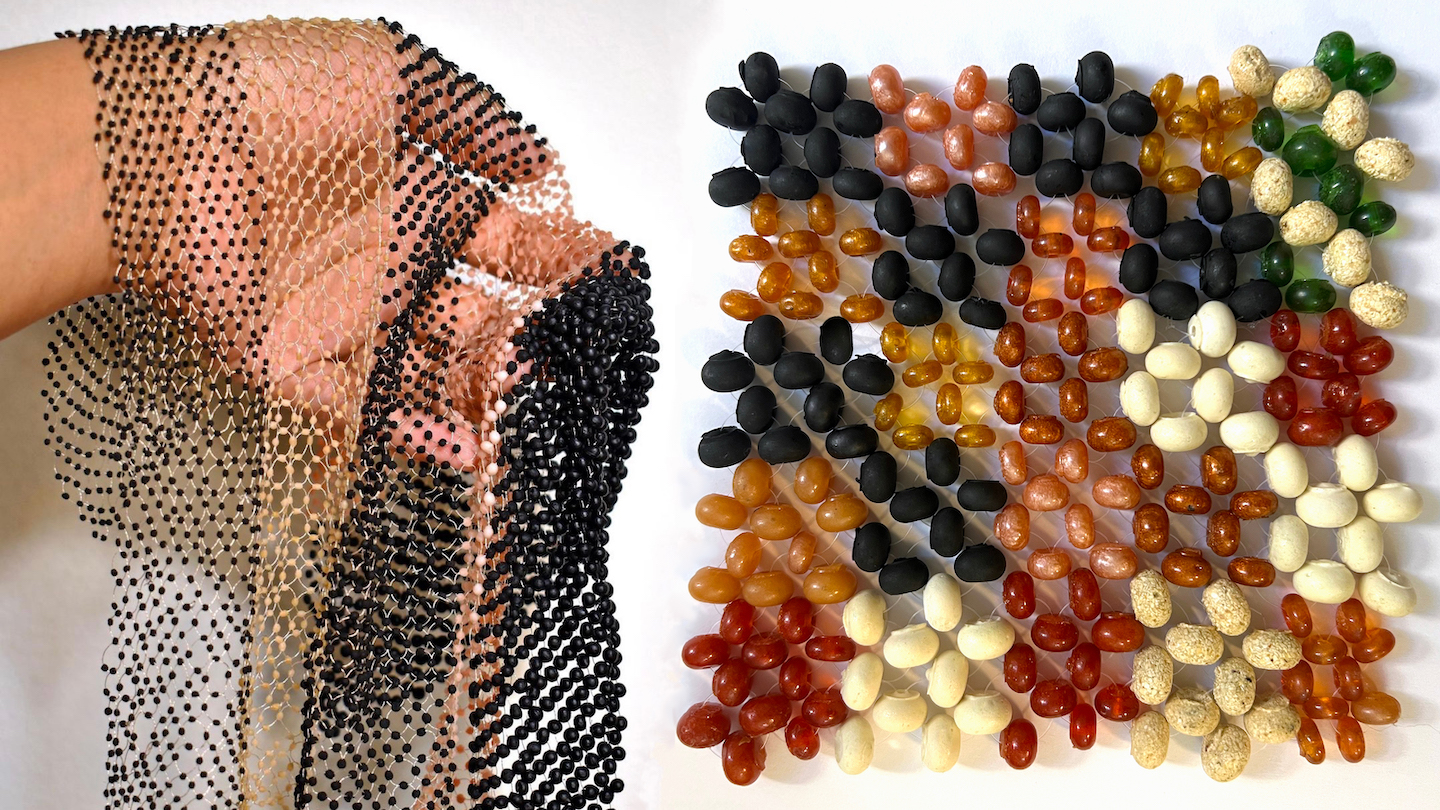
Cellsense Named Runner-Up for 2023 U.S. James Dyson Award
Team members Aradhita Parasrampuria, J Sebastian Garcia Medina, and Woodruff School graduate student Stefan Colton will progress to the international stage of the competition for their invention.
October 17, 2023
By Ian Sargent
Stefan Colton, an M.S. student in the George W. Woodruff School of Mechanical Engineering, is a member of a project recently announced as a national runner-up for the 2023 U.S. James Dyson Award. The team’s invention, Cellsense, provides a novel solution to the growing problem caused by microplastics and single-use products in the fashion industry.
“It's great to have been recognized by the James Dyson Foundation,” Colton said. “I appreciate the honor, and I'm optimistic it will help with the next steps for this project.”
Colton, a New York City native, joined Cellsense earlier this year after it was founded by Aradhita Parasrampuria in December of 2022. Parasrampuria saw a way to improve the environmental and human impact of traditional embellishment production in the fast fashion industry in Gujarat, India. By utilizing algae and regenerated cellulose to develop items like beads and sequins, Cellsense eliminates products that produce harmful microplastics and encourages more ethical labor practices.
“One decisive quality of algae is its abundance,” explained Colton. “You can grow large quantities of it very quickly. This abundance of raw material is important for making a larger impact.”
Cellsense embellishments resemble ornamental jade in touch and luster, and by including green fluorescent protein derived from the Aequorea Victoria jellyfish the beads can exhibit bioluminescence, giving designers the ability to create spectacular glowing patterns at low cost.
To create the beads, an automated pipetting system is used to deposit a biopolymer solution into divots on a 3D-printed bead loom, swiftly assembling large-scale beaded panels. This system can concurrently process up to six colors, allowing for complex and intricate patterns. The biopolymers encapsulate the loom's threads, forming circular beads and avoiding laborious, repetitive threading. These beads naturally decompose within 2-4 weeks in a home compost, a vast improvement on polylactic acid (PLA) polymers that, while derived from organic sources, require a complex composting process to be broken down.
Cellsense has drawn interest from over a dozen fashion and jewelry brands, and the current plan is to solidify partnerships and launch collaborative industry projects within the year.
“The demand is there for alternative embellishments and Cellsense has already worked with designers to demonstrate the possibilities,” said Colton. “The main challenge now is scaling up the manufacturing processes.”
In addition to the U.S. James Dyson Award, Cellsense has received the Swarovski Foundation Creatives for Our Future Award, the Aronson Fellowship from the Tishman Center, the New School Research Award, and the Founder Fellowship from Newlab.
The James Dyson Award is an international design award that celebrates, encourages, and inspires the next generation of design engineers. It's open to current and recent design engineering students, and is run by the James Dyson Foundation, James Dyson’s charitable trust, as part of its mission to get young people excited about design engineering. Cellsense and three other projects from the U.S. will move on to the international stage of the competition which will announce a shortlist of 20 finalists later this month, with winners being announced in November.
